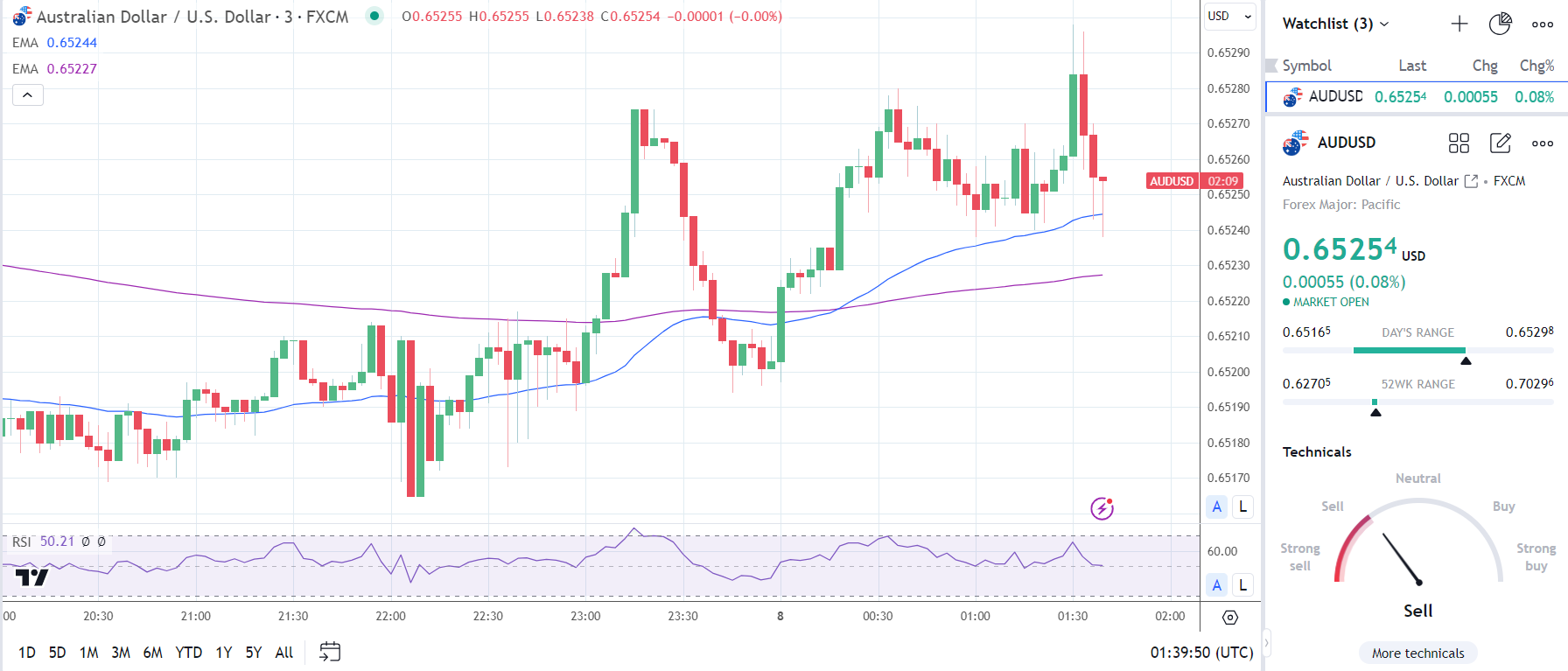
Consumer prices in China experienced a sharper year-over-year decrease, while a less pronounced decline in producer prices may indicate a change in demand trends.
In January, consumer prices in China declined by 0.8% year-over-year, a notable shift from the 0.3% decline seen in December. Economists had predicted a 0.5% decrease in consumer prices for January. Month-on-month, consumer prices rose by 0.3% compared to a 0.1% increase in December, deviating from economists' expected 0.4% rise.
Meanwhile, producer prices experienced a year-over-year decline of 2.5%, slightly lower than the 2.7% decrease recorded in December. Economists had anticipated a 2.6% fall in producer prices for January. The unexpected resilience in producer prices tempered the impact of the greater-than-expected decline in consumer prices.
Preceding the release of China's inflation data, the AUD/USD initially dropped to a low of $0.65165 before rebounding to a high of $0.65280. Following the inflation numbers, the AUD/USD surged to a peak of $0.65298 before sliding to a low of $0.65238. By Thursday, the AUD/USD had climbed by 0.08% to reach $0.65254.

080224 AUDUSD 3 Minute Chart
Investor attention will be drawn to US labor market data on Thursday, with economists forecasting a decline in initial jobless claims from 224k to 220k for the week ending February 3. Additionally, market participants should consider speeches from FOMC members, particularly Thomas Barkin, who called for patience regarding interest rate cuts during his speech on Wednesday.

Subscribe to our daily newsletter and get the best forex trading information and markets status updates
Trade within minutes!
Comment (0)